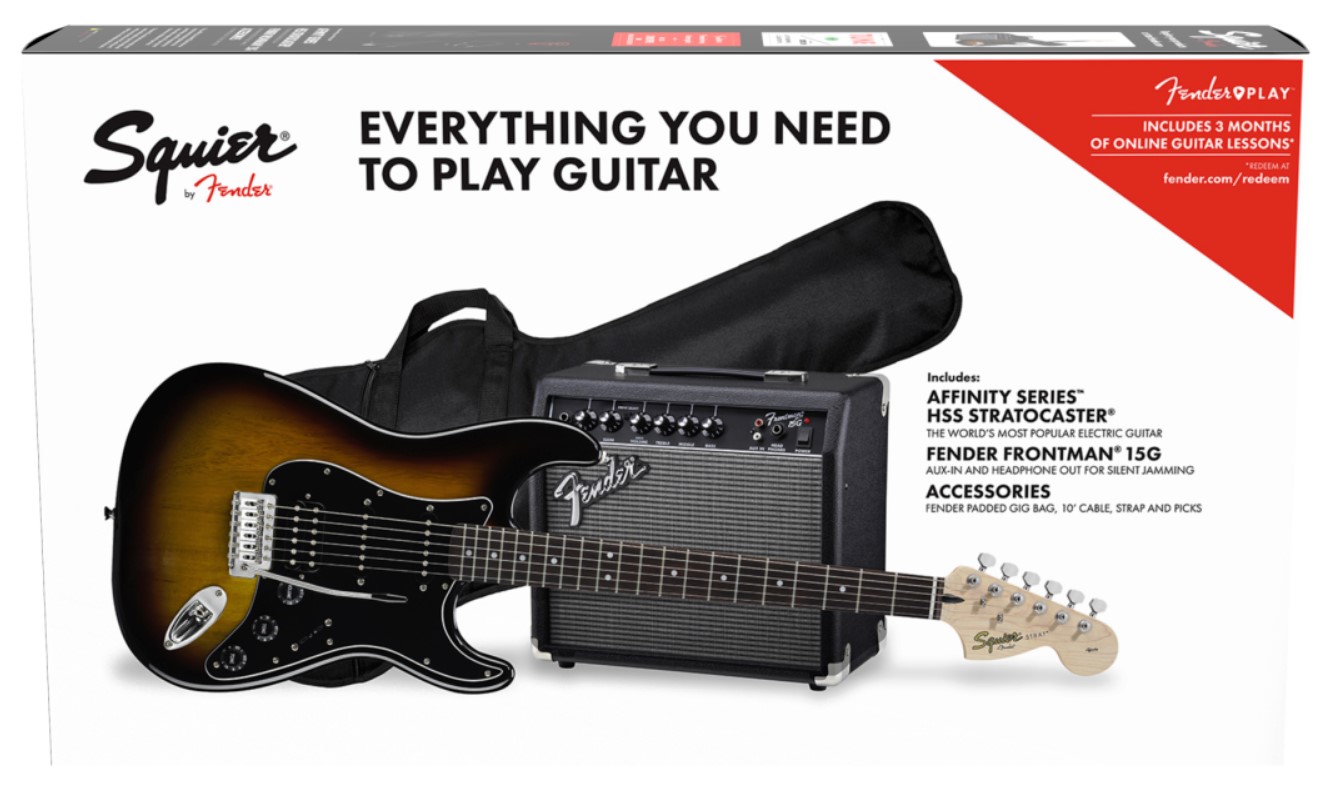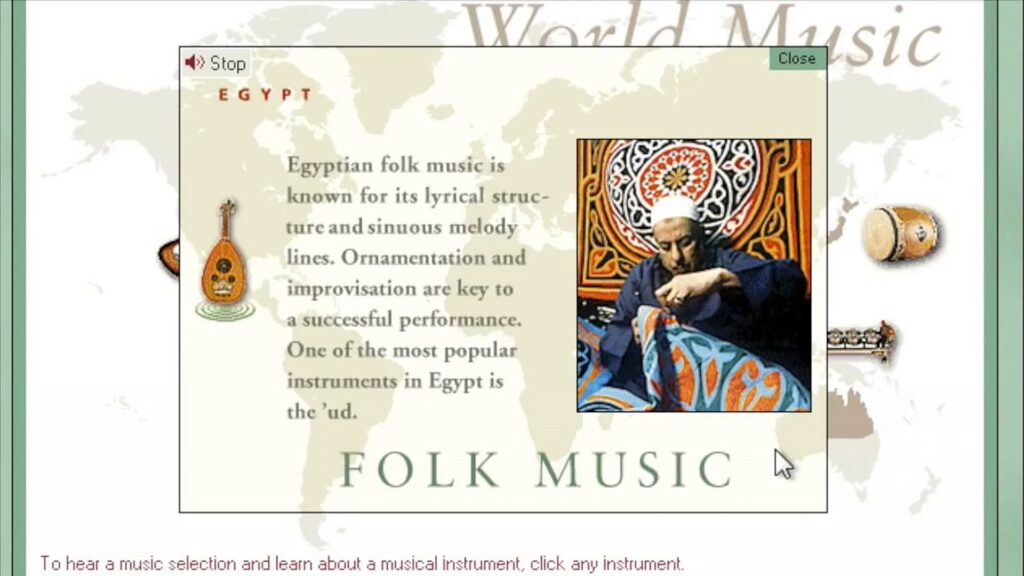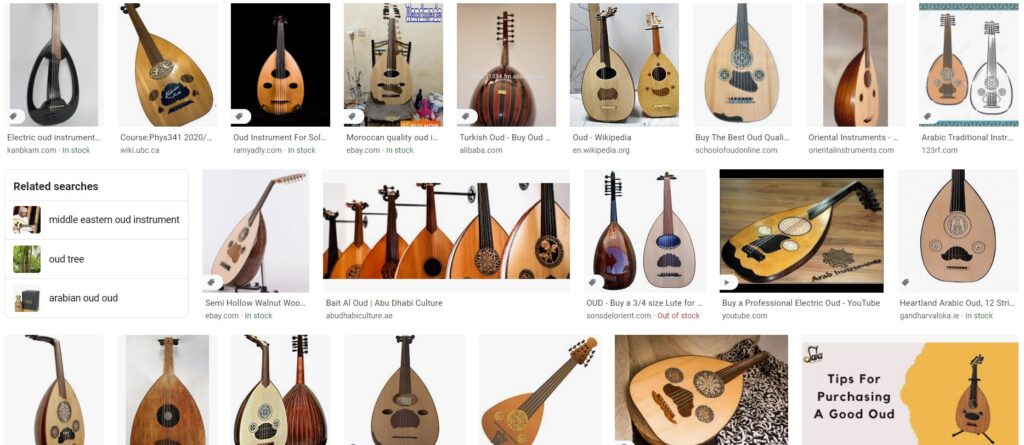I was about 12 or 13 years old when I became obsessed with buying an electric guitar. I was learning acoustic guitar at the time, so I would go into guitar shops in town and just take in all the colours of the guitars. It was so exciting.
I’d see all the different types of amplifiers, guitar picks, straps, distortion pedals, and I just really wanted to become a part of that world.
I remember it was around the time that Fender started making these Squire Stratocasters that were made in Mexico. They were cheaper. But they still sounded really good. They looked, felt and sounded a lot like the more expensive models. Back then I couldn’t really tell the difference.
The coolest thing I saw in music shops was these packages that included an electric guitar, a small entry-level amplifier, and a guitar book. It was everything you needed to start playing.

I never ended up getting one of those starter packs. I bought my friend’s old Squire that was made in Korea, and I had an old amplifier my Dad that had reverb and vibrato. It wasn’t much, but it did the job.
I was such a newbie to the guitar world I didn’t even know what made guitars sound the way they do. I didn’t know you needed a distortion pedal to sound like Jimi Hendrix.
The first time I plugged in my new electric guitar into my Dad’s old amp, it didn’t sound like anything special. It sounded like a crappy toy acoustic guitar.
It was great surprise and learning experience for me.
Had I bought the starter Strat-package, I would have at least been able to turn up the drive volume and get some of that distortion I was craving…
Soon after, I was looking for an Oud
Our family bought our first desktop family computer, and it came with Microsoft Encyclopedia 97. (Does this ring a bell?)

There was a section about musical instruments around the world, and you could hover your mouse over the world map and when you went over Egypt, the Oud would come up.
It would play a short clip of music that has haunted me ever since. It was Hamza El Din’s rendition of Lamma Badda Yatathana. (Listen to the same recording here.)
The original clip was about less than a minute long. It didn’t even get to the singing part. But that’s all it took to hook me for life, until this day.
Finding an Oud was near impossible
I was surprised that I hadn’t seen this instrument before. I was already very familiar with the main instruments in Persian music, but I had never seen the Oud in a Persian ensemble before.
Looking back on that time in the 90’s, I now know that there were only several Oud players worthy of note in Iran. The Oud didn’t really take off in Iran until the late 2000’s.
So it was basically impossible for me in Canada to get my hands on a decent Oud.
One of my best friend’s mom was travelling to Iran, and brought me back an Oud. It was so difficult for her to find an Oud too. She had to go to strange parts of town to find it. In the end she got me my first Oud.
Sadly, it was a really bad Oud.
The pegs were stuck like concrete, the action was ridiculously high, and there were serious cracks in the soundboard. It cost me $350 bucks. This is $350 about 20 years ago. Considering inflation, we’re talking about $500 by today’s price.
Where we are today
We’ve come a really long way since I got my first Oud. A really long way…
Nasser Shamma said that we’ve “entered the Golden Age of the Oud”, and I think he’s right.
The quality and availability of wood, and technology is such now that there are many Ouds made by many different luthiers now. Luthiers are experimenting, testing, and researching and refining their methods and innovating. With the internet, we can now order an Oud online and have it shipped and received in less than a week.
The Oud world is finally catching up with the guitar world to some degree. And now with websites like OudforGuitarists, you can learn the Oud too.
However, it’s still risky for beginners. You have doubts about buying an Oud online, and I get it. I often have these doubts too.
What happens if it gets damaged?
Can I return it?
Is it a good Oud?
How do I know if it sounds good?
That’s why we’ve teamed up with Daniel at Ethnic Musical to provide you with the best possible Oud quality for the price. He’s a great guy, and he plays Oud player himself, and loves the Oud as much as we do.
The most important thing for a beginner Oud player is the greatest ease of tuning the instrument, and ease of playing (optimal string height from the fingerboard so your fingers don’t need to work too hard).
Ethnic Musical works directly with their Oud building factory to ensure their Ouds meets these criteria.
You get…
- Hand-fitted ebony pegs for the greatest tuning experience possible.
- Quality wood pegs and bridge. They don’t use any plastic materials like those other low-cost Turkish-made Ouds.
- A quality set of strings you won’t need to change for at least a year or longer.
- Peace of mind that the instrument is good for beginner as well as the up-and-coming professional Oudist. They are Oud players themselves and ensure that every Oud is fit for you.
There’s no excuse now
There’s no excuse now. You too can buy an Oud and learn it. You can get everything you need to start playing. I want to help you make it happen.
This Christmas we have teamed up with Ethnic Musical to bring you Ouds PLUS Oud Learning Programs.
I want you to save some money this Christmas when you buy an Oud. I want you to have everything you need to start playing the Oud. I don’t want you to go through the same troubles and pains that I went through trying to learn the Oud.
I lost 5 years of Oud practice because I couldn’t find a decent Oud, and I didn’t have good learning materials. I feel grateful that I can help you avoid this.
When you buy an Oud from the link below this week, you’ll get the complete 4 levels of the Oud Foundation Program (valued at $199) for half price. You save $100! These Oud lessons will give you enough material to work on for at least 6 – 8 months.
We’re offering these prices from Monday, December 14th to Friday the 18th.






